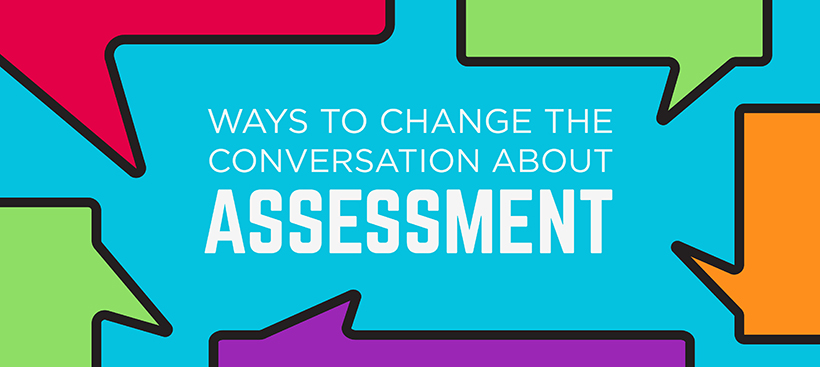From the NCTE Standing Committee on Literacy Assessment
This post was written by NCTE member Bobbie Kabuto, the chair of the NCTE Standing Committee on Literacy Assessment.
In my previous blog Assessing Linguistically Diverse Students, I drew from Key Takeaways from a Survey of NCTE State Policy Analysts to report that linguistically diverse students are not being assessed in culturally and linguistically relevant ways. I argued that federal and state-wide high-stakes testing ignores (1) the identities of linguistically diverse students, (2) the linguistic knowledge of diverse students, and (3) the uses of multiple, formative assessments.
This follow-up blog will focus on Biographic Biliteracy Profiles (hereafter I’ll use the term Biliteracy Profiles) as a culturally relevant way to assess linguistically diverse readers. I will illustrate how Biliteracy Profiles can be used for bilingual readers by focusing on Sophie, a fourth-grade Greek- and English-speaking student.
What are Biographic Biliteracy Profiles?
Biliteracy Profiles are narratives that teachers use to document the learning biographies of linguistically diverse students. Biliteracy Profiles are made up of observations (what students do) and interviews (what students say) about themselves as readers and their reading.
The table below provides a suggested outline for Biliteracy Profiles.
Biographic Biliteracy Profile
| Section | Description |
| Learning Biography | Observe and discuss the following over different time periods and contexts:
What are the student’s and families’ learning backgrounds and histories? What is the families’ language background? What interests does the student have? What types of activities does the families engage in? What kind of reading and writing do they like to do outside of school? What topics or themes are they interested in? How does the child define a “good” reader? What does the child think it would take to get better at reading?
|
| Observations of
a Reader |
Observe and discuss the following over different time periods and contexts:
Ask students to choose and read different types of books and record their oral reading behaviors. Are students comfortable reading in English? If you ask students to read in their other language, what do they do? What types of miscues do they make? How do they use different modes (i.e. written text, pictures, illustration, etc.) to construct meaning? Do they monitor their reading for meaning? If so, how? How do they retell stories? Do they prefer English or another language to retell stories? |
| Literacy Manifestations | Conclude and discuss the following:
What does the learning biography tell you about the student? Is the learning biography supported or challenged by the observations of a reader? How? What types of diverse practices are recommended to support the student in real-world ways? |
An Example of a Biographic Biliteracy Profile
The table below provides a brief example of a Biliteracy Profile for Sophie, who was a fourth-grade student in a dual-language Greek and English school. For this profile, I documented some of Sophie’s bilingual reading behaviors when reading The Garden of Abdul Gasazi by Chris Van Allsburg.
An Example from Sophie
| Section | Description |
| Learning Biography | Observe and discuss the following over different time periods and contexts:
Sophie is a fourth-grade student at a private, dual-language (Greek and English) school. Sophie’s mother Francis is a native Greek speaker who is also fluent in English, while her father, Steve, is monolingual English speaking. Sophie lives in an economically stable home environment with two financially secure parents. Sophie travels to Greece for the summers to spend time with her grandmother. Sophie said that she likes to read, and that she likes to read and is more confident reading English books than Greek books. She also expressed that she prefers speaking in Greek over reading and writing in Greek.
|
| Observations of
a Reader |
Observe and discuss the following over different time periods and contexts:
Sophie read The Garden of Abdul Gasazi by Chris Van Allsburg. When reading, Sophie read the phrase “turn off the lights” as “close the lights.” This miscue can be explained by Sophie drawing from the Greek language to predict the written text. A direct translation of “turn off the lights” in Greek is “close the lights.”
Sophie read “into the garden” as “into his garden” for the sentence, “When the magician turned around Alan quickly apologized for letting Fritz into the garden.” When I asked Sophie why she made the miscue, she replied, “Maybe because the book is called the Garden of Abdul Gasazi and it [the garden] was probably his garden.” Sophie’s response illustrated that Sophie was activity using contextual information to make sense of the written text. Sophie’s response suggested that she understood that the garden belonged to Abdul Gasazi and not Fritz. Sophie may have also been using the pictures in the book, which shows the garden placed outside of Abdul Gasazi’s home.
|
| Literacy Manifestations | Conclude and discuss the following:
When reading The Garden of Abdul Gasazi, Sophie drew from her range of linguistic resources. There was evidence of Sophie using her knowledge of spoken Greek to predict the upcoming text. She also used the pictures and demonstrated that she understood the context of the story as she read. Sophie was reflective as a reader. When asked why she made miscues, Sophie was able to articulate her reasons and her thought process. Sophie’s reading of The Garden of Abdul Gasazi is reflective of the diverse language practices common among bilingual readers.
|
How do Biographic Biliteracy Profiles assess students in culturally relevant ways?
Biliteracy Profiles can help to shift students’, teachers’, and parents’ mindsets about bilingual readers away from a deficit perspective and toward an asset perspective of assessing readers. Rather than documenting what linguistically diverse readers cannot do and what modifications they need to be successful, we engage in close observations to observe what readers can do. Biliteracy Profiles help to assess students, like Sophie, in culturally relevant ways by:
- acknowledging the identities of linguistically diverse readers. We are able to view and understand Sophie as an individual who is a member of a transnational family and community. She is not “Greek-speaking” in one setting and “English-speaking” in another, as these are not discrete identities. Instead, Sophie reinforces her bilingual identity when she reads, regardless of the language of the text.
- building on the linguistic knowledge of diverse readers. When reading, Sophie is situated in a translanguaging context. Within a translanguaging context, language borders are permeable and fluid, and Sophie uses linguistic forms with flexibility to construct meaning with text.
- the use of formative assessments to reframe the miscues of linguistically diverse readers. Engaging in close observations of what readers do and what they say acknowledges that the miscues of readers, like Sophie, are not inherent problems of being a bilingual reader. Rather, the miscues of linguistically diverse readers reflect their everyday language practices. These observations can be used to make informed decisions for reading instruction that builds on the diverse linguistic knowledge of readers.

Bobbie Kabuto is professor and chair of the Elementary and Early Childhood Education Department at Queens College, City University of New York.

